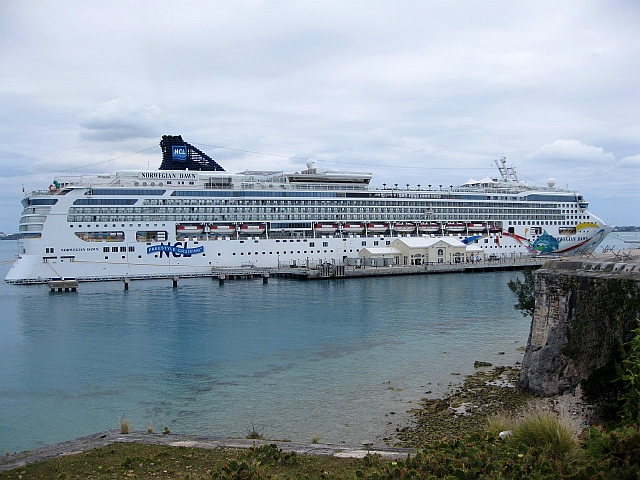Steve recently discussed the details of the recent Citi Prestige devaluation. Unfortunately, Citi chose to eliminate several valuable benefits, such as trip cancellation/interruption coverage. I already had second thoughts about renewing after the last devaluation, though I decided to keep it. However, does the card still make any sense after this latest round?
Citi Prestige Devaluation – What’s Going Away
Unfortunately, as Steve pointed out, Citi removed pretty much every valuable benefit of the card last Sunday, including:
- Worldwide car rental insurance
- Worldwide travel accident insurance
- Trip cancellation and interruption protection
- Trip delay protection
- Travel and emergency assistance
- Roadside assistance dispatch service
- Baggage delay protection
- Lost baggage protection
- 90-day return protection
- Citi price rewind
There’s really no sugar coating it – this devaluation stinks. Like Steve, I fail to understand what the Citi braintrust thought when they decided on this. I blasted the Amex Platinum as overrated partially because of the lack of any trip insurance benefits. Now, Amex recently announced new insurance benefits for the Plat, basically matching what Chase offers. (I still have issues with the Plat, especially since Amex killed the gift card workaround for the airline fee credit. But with Citi racing to the bottom, it’s no longer clearly overrated.)
Many cardholders seem to bemoan the loss of Citi Price Rewind the most. Somehow, I never managed to use this benefit, but yes, this could provide thousands in savings over the course of a few years. Also, as one of the few remaining Diners Club cardholders, I never use the Prestige for car rentals. Diners Club offers primary loss damage waiver benefits worldwide, so all rentals go on that card. But the trip insurance hits me hard. As a cruiser, the ability to insure an expensive cruise with the card added tons of value. Insurance for two for a typical cruise easily runs $150-300. Combined with the $250 travel credit, one cruise easily recoups most or all of the annual fee.

And, of course, the vaunted Fourth Night Free benefit recently became often effectively worthless; cardholders must use the Thank You travel portal, and the higher rates and lack of elite benefits often makes you better off just foregoing the discount.
What Benefits Remain
In fairness, the Citi Prestige does retain several useful benefits post-devaluation, including:
- 5x points on dining and airfare, 3x points on hotels and cruise lines
- $250 annual travel credit
- Priority Pass Select membership (includes restaurants, for cardmember plus 2 guests)
- Global Entry credit once every five years
- Cell phone protection
- 24-month extended warranty protection
- Identify theft protection and resolution services
- Personal concierge services

Does the Citi Prestige Hold Any Advantages Over Chase or Amex?
So the question becomes, does it make any sense to hold on to the Citi Prestige over other premium cards? Specifically, the Chase Sapphire Reserve or Amex Platinum? Let’s take a look in terms of points earnings.
For purposes of this exercise, I assume the “net” out-of-pocket annual fee for the three cards as:
- $245 for the Citi Prestige ($495 annual fee less $250 travel credit)
- $150 for the Chase Sapphire Reserve ($450 annual fee less $300 travel credit)
- $350 for the Amex Platinum ($550 fee less $100 each for the travel and Uber credits. I haircut each by half given the gimmicky nature of how to redeem them. YMMV.)
Now, let’s take an example of someone who spends $3,000 a year each on airfare, hotels, and dining out, and $11,000 a year in other spending. For this purpose, I assume the hotel spend is for direct bookings, not through a travel portal. You’d earn the following value of points per year, at 1.5 cents/point.
| Category | Citi Prestige | CSR | Amex Platinum |
| Airfare | 15,000 | 9,000 | 15,000 |
| Hotels | 9,000 | 9,000 | 3,000 |
| Dining | 15,000 | 9,000 | 3,000 |
| Other | 11,000 | 11,000 | 11,000 |
| Total Points | 50,000 | 38,000 | 32,000 |
| Value of Points | $750 | $570 | $480 |
| Net annual fee | $245 | $150 | $350 |
| Net benefit (cost) | $505 | $420 | $130 |
So the Citi Prestige does provide a marginal benefit in terms of points earned in this example. That benefit over the CSR might increase further if you spend more on airfare and dining. But here’s the thing – if I’m now required to buy my own travel insurance, the “benefit” disappears quickly. Just one $150 outlay for a cruise, and I’m already worse off than with the CSR. One cruise and one expensive plane trip probably gets me close to the Plat. In addition, the Plat offers some potentially useful extras like Hilton and Marriott elite status, access to the Fine Hotels & Resorts program, and the Cruise Privileges Program. In other words, it’s now a distant third behind both in terms of benefits.
Making matters worse for the Prestige, Citi offers an arguably equal lower-cost product, the Thank You Premier. That card offers 3x points on all travel, including gas, and 2x points on dining. In the above example, if $2,500 of the “other” is gas, you earn 40,000 points. (That’s 18,000 points for airfare and hotel spend, 6,000 points for dining, 7,500 points for gas, and 8,500 points for other.) In other words, that’s $600 of points for a $95 annual fee – or the exact same net benefit. And unlike the Prestige, you can apply Thank You points to airfare at 1.25 points per cent.
Citi Prestige Devaluation – Final Thoughts
From where I sit, unless another shoe with improved benefits drops, Citi really shot themselves in the foot here. They now offer a premium card that, well, doesn’t feel particularly premium. It’s now a distant third behind Amex and Chase’s competing products. And you can get the same net points value from the much cheaper Thank You Premier. As for me, I have a few flights with “grandfathered” insurance coverage through the end of the year. After that, I plan to downgrade to the Thank You Premier while deciding whether to pick up a different premium card.




